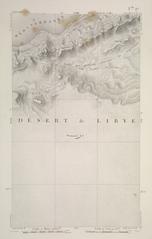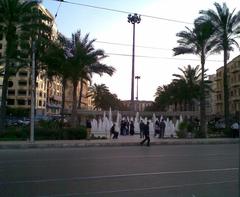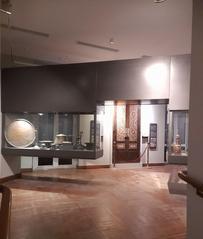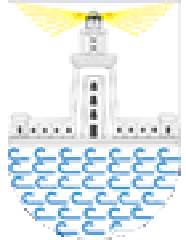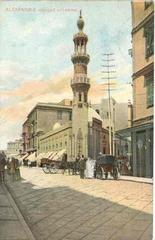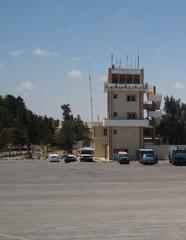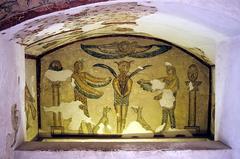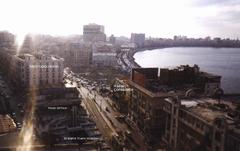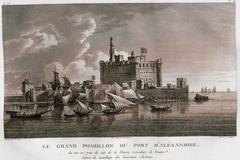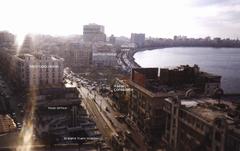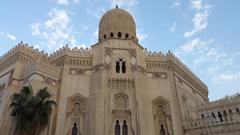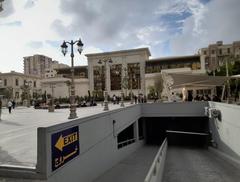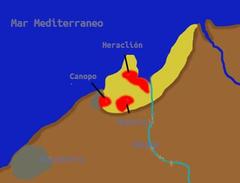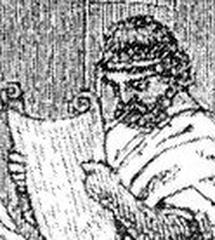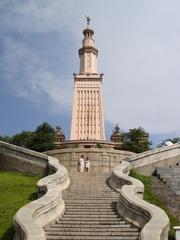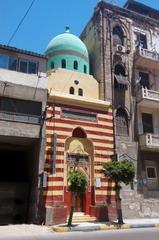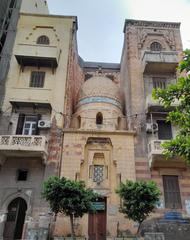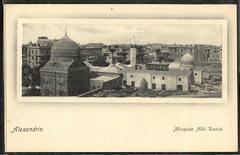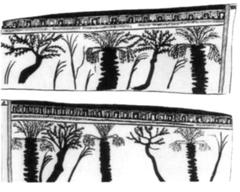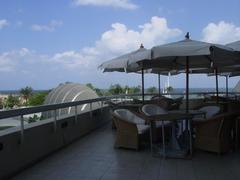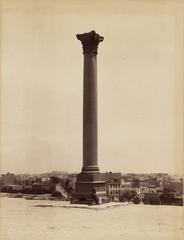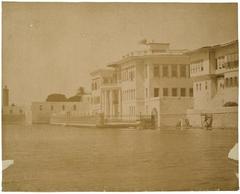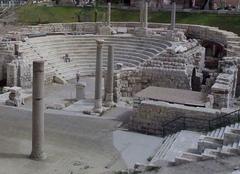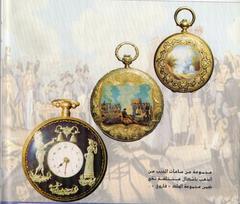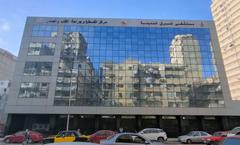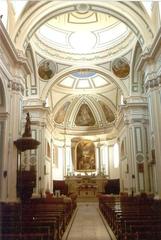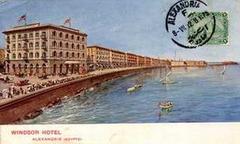Comprehensive Guide to Visiting Cavafy Museum, Alexandria, Egypt
Date: 25/07/2024
Introduction
The Cavafy Museum in Alexandria, Egypt, serves as a fascinating portal into the life and work of Constantine P. Cavafy, a luminary among 20th-century Greek poets. Nestled in the heart of Alexandria, the museum is an essential destination for literature aficionados and history enthusiasts alike. Originally conceived in 1977 within the Greek Consulate General by Nikolaos Kapellaris, the museum took a definitive shape in 1991 when Kostis Moskof proposed converting Cavafy’s actual apartment into a museum. This initiative was realized with the support of Stratis Stratigakis and the Greek State, culminating in the museum’s inauguration on November 16, 1992 (Wikipedia). The museum’s location on Cavafy Street (formerly Lepsius and Sharm El Sheikh) places it amidst Alexandria’s vibrant historical tapestry, surrounded by landmarks like the Greek Orthodox Patriarchate and the Alexandria Opera House (Arts and Collections). The recent restoration by the Onassis Foundation and the Hellenic Foundation for Culture underscores the museum’s commitment to preserving Cavafy’s legacy, making it a global cultural destination (Egypt Today).
Table of Contents
- Introduction
- History of the Cavafy Museum
- Location and Significance
- Restoration and Modern Developments
- Exhibits and Collections
- Cultural Impact and Legacy
- Visitor Information
- Travel Tips
- FAQ
- Call to Action
- Visuals and Media
- Internal and External Links
- Conclusion
History of the Cavafy Museum
Origins and Early Development
The Cavafy Museum, dedicated to the renowned Greek poet Constantine P. Cavafy, has a rich history that dates back to the late 20th century. The first initiative to create a museum in honor of Cavafy was taken in 1977 by Nikolaos Kapellaris, the then Consul General of Greece in Alexandria. This initial museum was housed within the premises of the Consulate General (Wikipedia).
In 1991, a significant development occurred when Kostis Moskof, the cultural attaché at the Greek Embassy in Cairo, proposed converting Cavafy’s actual apartment into a museum. This initiative was supported by Stratis Stratigakis, the founder of the homonymous institutes based in Thessaloniki. The Greek State, represented by Consul General Panayotis D. Cangelaris, signed a nine-year lease for the apartment (Wikipedia). The museum was officially inaugurated and opened to the public on November 16, 1992, by Vyron Polydoras, the then Deputy Minister for National Education and Religious Affairs (Arts and Collections).
Location and Significance
The Cavafy Museum is located in the heart of Alexandria, Egypt, on what is now known as Cavafy Street. During Cavafy’s lifetime, the street was called Lepsius, and it was later renamed Sharm El Sheikh before finally being named after the poet (Wikipedia). The museum is situated near the Alexandria Opera House on Fouad Street, in the Attarin division of the city (Wikipedia).
The building itself is surrounded by significant landmarks such as the Greek Orthodox Patriarchate, the Greek Hospital, and the city’s brothels, which Cavafy poetically referred to as the “Temple of the Soul,” the “Temple of the Body,” and the “Temple of the Flesh” (Arts and Collections). This location is emblematic of the multicultural and cosmopolitan nature of Alexandria during Cavafy’s time, a city that was a melting pot of different cultures and nationalities.
Restoration and Modern Developments
The Onassis Foundation played a crucial role in the restoration of the Cavafy House. In partnership with the Hellenic Foundation for Culture, the foundation aimed to turn the museum into a global destination for visitors. The restoration project included architectural design by Eva Manidaki and Thanassis Demiris of Flux Office, who worked to recreate the residence as it was during Cavafy’s lifetime (Arts and Collections).
The museum reopened after restoration on May 25, 2024, with a carefully designed entrance that reflects Cavafy’s life filled with documents, poetry, and work (Egypt Today). The restoration aimed to preserve the historical and cultural significance of the apartment, allowing visitors to experience the environment in which Cavafy lived and worked.
Exhibits and Collections
The Cavafy Museum houses a variety of exhibits that provide insight into the poet’s life and work. The museum displays letters, notes, and poems written by Cavafy, as well as portraits, drawings, and photographs of the poet and his close friends. One room is dedicated to Stratis Tsirkas, a writer and close friend of Cavafy, who lived with him for some time (Wikipedia).
The museum also contains a vast collection of published books and papers on Cavafy, including translations of his work in Greek, Arabic, English, and 15 other languages. Additionally, there are more than 3,000 scholarly articles related to the poet (Wikipedia). The exhibits aim to provide a comprehensive understanding of Cavafy’s literary contributions and his impact on Greek and global literature.
Cultural Impact and Legacy
Cavafy’s work and his association with Alexandria have left a lasting legacy. The poet and his living place have been mentioned in several literary works, including Lawrence Durrell’s “Alexandria Quartet” and Don Meredith’s “Where the Tigers Were - Travels through Literary Landscapes” (Wikipedia). The museum has attracted numerous visitors, including Nobel laureates and renowned authors such as Ferit Orhan Pamuk and Mario Vargas Llosa (Majalla).
The cultural atmosphere in Alexandria during Cavafy’s lifetime was dynamic and diverse, with literary works published in multiple languages, including French, Greek, Italian, and Arabic. This multicultural environment contributed to the city’s transformation into a significant global commercial center, attracting foreign writers and intellectuals (Majalla).
Visitor Information
Visiting Hours and Admission
The Cavafy Museum is open to the public from Tuesday to Sunday, between 10:00 AM and 5:00 PM. Admission is free, making it accessible to a wide range of visitors (Arts and Collections).
Special Events and Guided Tours
The museum occasionally hosts special events, workshops, and guided tours. Visitors are encouraged to check the museum’s official website or contact the museum directly for information on upcoming events and guided tour availability.
Travel Tips
- Nearby Attractions: The museum’s location on Rue C.P. Cavafy (formerly Rue Lepsius and Rue Sharm el Sheik) in the Attarin district of Alexandria makes it easily accessible for tourists exploring the city’s historical and cultural sites. Nearby attractions include the Alexandria Opera House, the Greek Orthodox Patriarchate, and the Alexandria National Museum.
- Accessibility: The museum is wheelchair accessible. Visitors with mobility issues can contact the museum in advance to arrange for any necessary accommodations.
- Photography: Photography is allowed inside the museum, but flash photography is prohibited to protect the exhibits.
FAQ
Is the Cavafy Museum wheelchair accessible? Yes, the Cavafy Museum is wheelchair accessible. Visitors with mobility issues can contact the museum in advance for necessary accommodations.
Are there guided tours available? Yes, the museum offers guided tours. It is recommended to check the museum’s official website or contact them directly for the schedule and availability of guided tours.
Are special events hosted at the museum? Yes, the Cavafy Museum occasionally hosts special events, workshops, and literary readings. Information about these events can be found on the museum’s official website.
Call to Action
Plan your visit to the Cavafy Museum to immerse yourself in the life and work of Constantine P. Cavafy. Download the Audiala mobile app for more travel guides and follow us on social media for updates on historical sites in Alexandria and beyond.
Visuals and Media
High-quality images and videos of the museum are available on the official website and social media pages. These visuals provide a sneak peek into the museum’s exhibits and the restored apartment of Cavafy. All images are web-optimized, and alt tags include relevant keywords such as ‘Cavafy Museum,’ ‘Alexandria historical sites,’ and ‘Greek poet Constantine P. Cavafy.‘
Internal and External Links
For more information on other historical sites in Alexandria, check out our articles on the Alexandria Library and the Catacombs of Kom El Shoqafa. For further reading on Greek culture, visit the Hellenic Foundation for Culture’s website.
Conclusion
In summary, the Cavafy Museum stands as a testament to the enduring legacy of Constantine P. Cavafy, one of the most influential poets of his time. Through its meticulously curated exhibits, the museum offers an intimate look into Cavafy’s life and literary contributions, providing invaluable insights for scholars and enthusiasts alike. The museum’s strategic location in Alexandria enhances its appeal, placing it within reach of other significant cultural and historical landmarks. The restoration efforts led by the Onassis Foundation have not only preserved the historical integrity of the museum but also elevated it to a global cultural landmark. Whether you are a literary enthusiast or a curious traveler, a visit to the Cavafy Museum promises a deeply enriching experience that connects you to the rich, multicultural heritage of Alexandria. For more updates and information, consider downloading the Audiala mobile app or following us on social media for the latest on historical sites and cultural events (Majalla).
References
- Wikipedia. (n.d.). Cavafy Museum. Retrieved from Wikipedia
- Arts and Collections. (n.d.). Restoration of Cavafy House in Alexandria. Retrieved from Arts and Collections
- Egypt Today. (2024). Alexandria’s Cavafy Museum Reopens After Restoration. Retrieved from Egypt Today
- Majalla. (n.d.). Cavafy Museum: A Hidden Gem in Alexandria. Retrieved from Majalla
